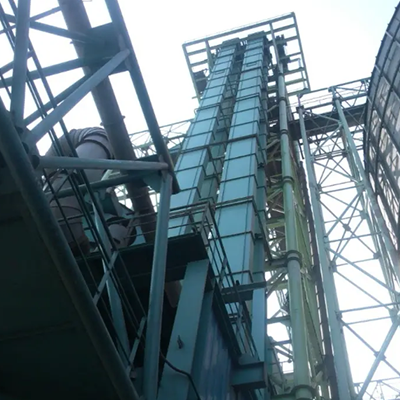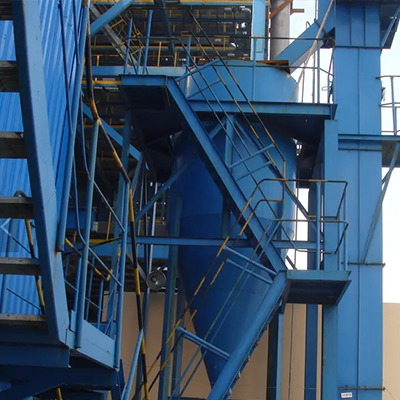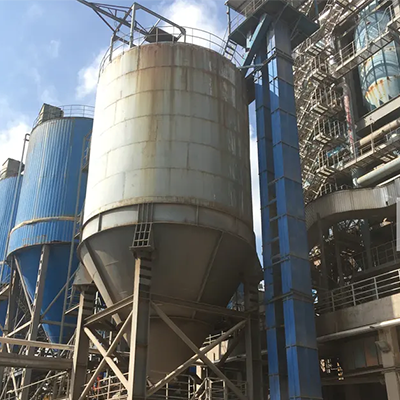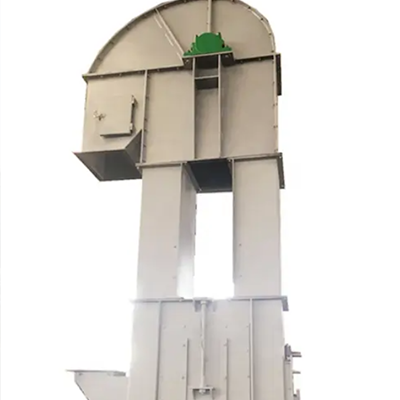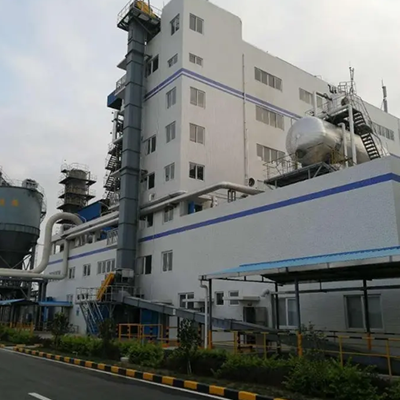
Bulk Material Handling Equipment
Bulk Material Handling Equipment is designed to transport, store, and manage bulk materials efficiently in industries such as agriculture, mining, construction, power generation, and waste-to-energy. This equipment ensures smooth material flow, reduces labor intensity, and improves safety and environmental compliance.
Types of Bulk Material Handling Equipment
1. Conveyors
Conveyors are the backbone of bulk material handling, transporting materials horizontally, vertically, or over long distances.
- Belt Conveyors: For horizontal or inclined transport of loose materials like coal, grains, or sand.
- Screw Conveyors: Use a rotating helical blade to move powders, granules, or semi-solid materials.
- Bucket Elevators: Transport bulk materials vertically using a series of buckets attached to a belt or chain.
- Drag Chain Conveyors: Designed for abrasive or hot materials like clinker or bottom ash.
- Pneumatic Conveyors: Use air pressure or vacuum to move lightweight, fine powders or granules.
2. Storage Equipment
Storage solutions are critical for holding bulk materials before or after processing.
- Silos: Large vertical structures for storing grains, cement, fly ash, or minerals.
- Hoppers and Bins: Temporary storage solutions for short-term inventory or metering applications.
- Tanks: For storing liquid or slurry bulk materials.
3. Feeding and Metering Systems
These systems control the flow of materials into processing lines or storage.
- Vibratory Feeders: Deliver consistent, controlled material flow for processing.
- Rotary Feeders: Move granular or powdered materials from one system to another.
- Weigh Feeders: Combine material transport and weighing for precise batching.
4. Loading and Unloading Equipment
These systems manage bulk materials during transfer to or from trucks, trains, ships, or storage.
- Truck/Ship Loaders: Designed for efficient material loading.
- Screw Unloaders: For unloading granular materials like grains or fertilizers.
- Reclaimers: Retrieve materials from storage silos, bins, or stockpiles.
5. Dust Control Equipment
Maintaining air quality is critical when handling bulk materials.
- Dust Collectors: Filter airborne particles during material transport.
- Enclosures: Minimize dust spread in conveyors, transfer points, and loading zones.
- Mist Systems: Suppress dust using water mist at critical points.
6. Stacking and Reclaiming Equipment
Used for building and retrieving stockpiles of bulk materials.
- Stackers: Move bulk materials to create stockpiles in mining or construction sites.
- Reclaimers: Extract materials from stockpiles for processing or loading.
7. Blending and Mixing Equipment
Homogenize materials for consistent quality.
- Rotary Blenders: Mix dry materials like cement or powders.
- Batch Mixers: Combine multiple materials with precise control.
Applications of Bulk Material Handling Equipment
- Agriculture:
- Grain conveyors, seed handling systems, and storage silos.
- Mining and Quarrying:
- Transporting ores, coal, and aggregates.
- Cement Production:
- Moving raw materials, clinker, and cement.
- Power Generation:
- Coal and ash handling systems in thermal power plants.
- Waste-to-Energy:
- Handling bottom ash, fly ash, and slag.
- Food Processing:
- Conveying grains, sugar, flour, and other ingredients.
- Chemical and Pharmaceutical:
- Enclosed systems for powders and granules.
Benefits of Bulk Material Handling Equipment
- Efficiency:
- Automates transport, reducing manual effort.
- Cost-Effective:
- Lowers operating costs by optimizing material flow.
- Safety:
- Reduces workplace hazards associated with manual handling.
- Environmental Compliance:
- Dust suppression and enclosed systems minimize pollution.
- Scalability:
- Equipment can be customized for various capacities and layouts.
Key Considerations in Equipment Selection
- Material Characteristics:
- Flowability, abrasiveness, particle size, and moisture content.
- Capacity Requirements:
- Tons per hour or volume per batch.
- Environmental Conditions:
- Temperature, humidity, and corrosion resistance.
- Energy Efficiency:
- Systems optimized to minimize power consumption.
- Integration:
- Compatibility with existing operations and control systems.
Innovations in Bulk Material Handling
- Smart Sensors:
- Real-time monitoring of material flow, equipment performance, and system efficiency.
- IoT Integration:
- Remote control and predictive maintenance using data analytics.
- Variable Speed Drives (VSD):
- Control conveyor speeds for energy savings and process optimization.
- Robotics:
- Automated loading, unloading, and material sorting.
Case Study: Fly Ash Handling in a Waste-to-Energy Plant
Challenge: Efficiently transport and store fly ash generated from incineration.
Solution: Installed pneumatic conveying systems to transport ash to storage silos, equipped with dust collectors for environmental compliance.
Result: Reduced material spillage, improved air quality, and ensured seamless operations.
Would you like help designing a bulk material handling system for a specific project or industry? Let me know the material type, capacity, and any challenges you’re facing!


